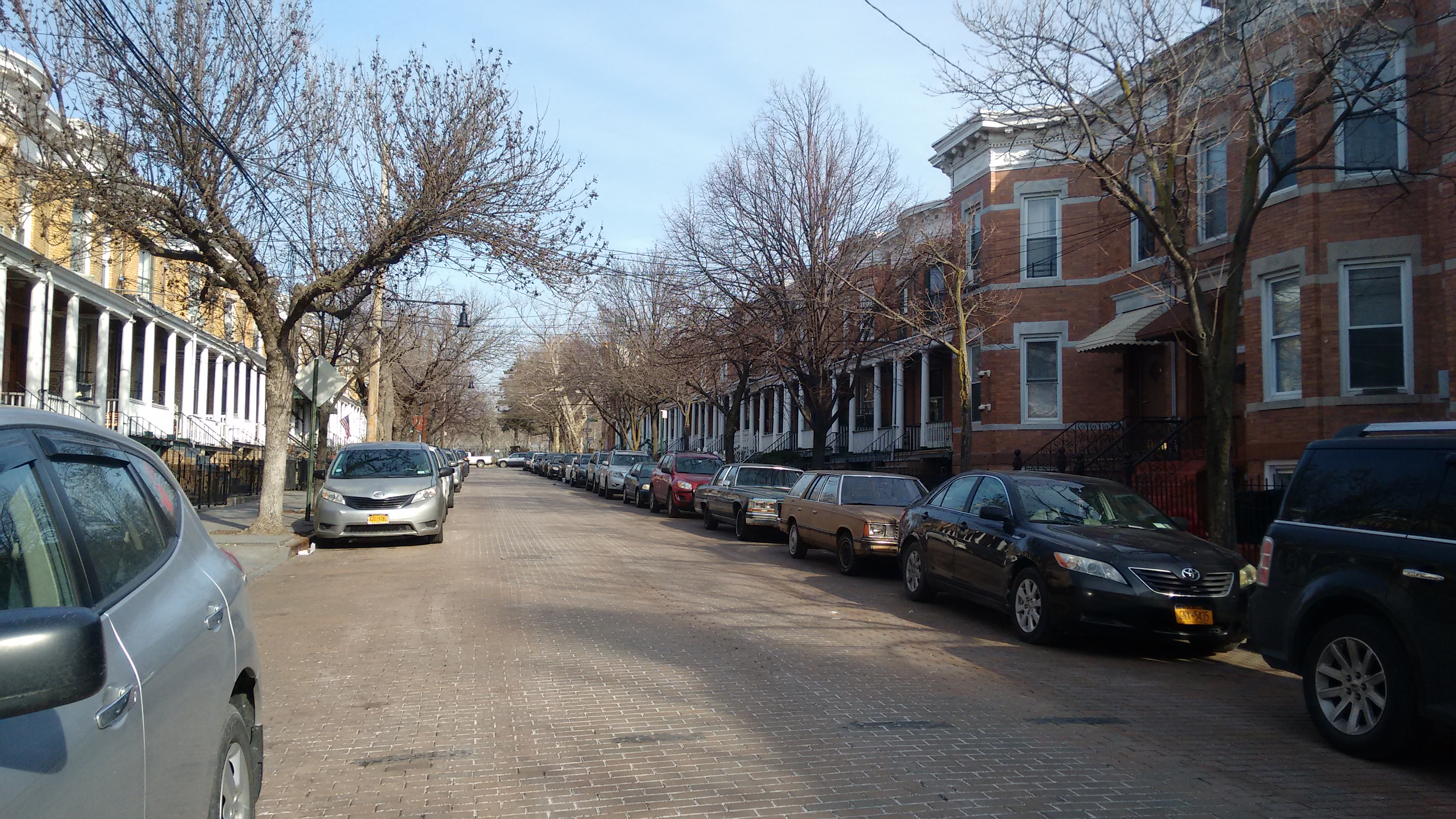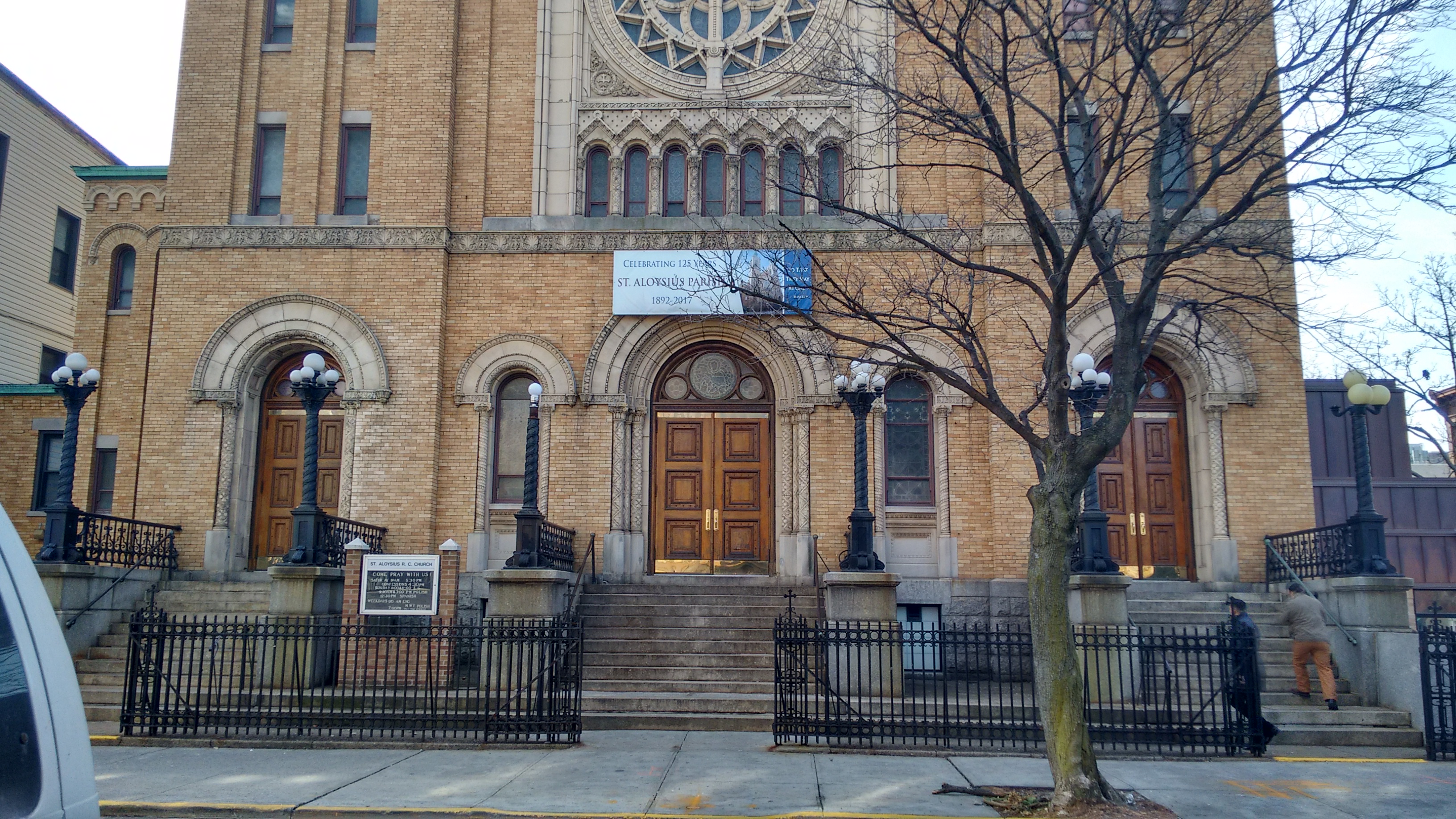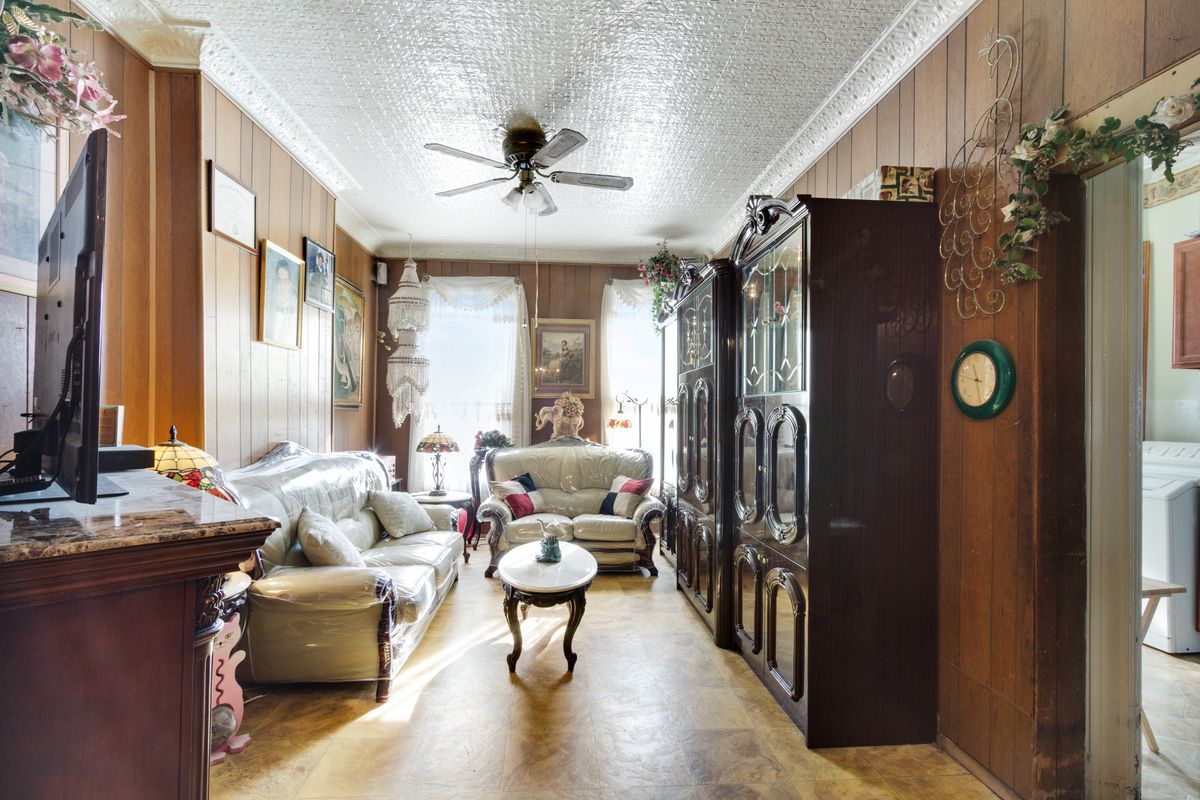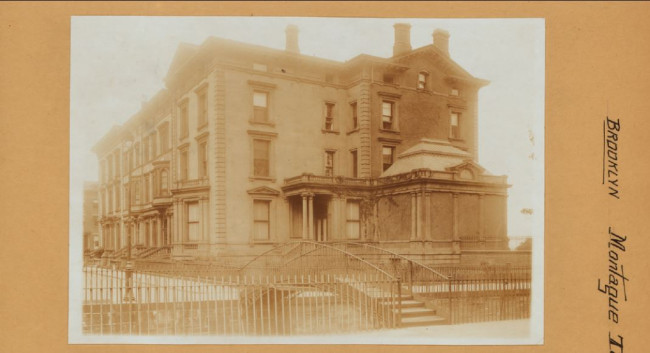Follow the yellow brick: Tracing Ridgewood's history through a single picturesque block

The two-family houses of Stockholm Street, designed by prolific early 20th century architect Louis Berger.
Marjorie Cohen/Brick Underground
Though they were once common, brick-paved streets are pretty hard to find in New York these days. A few blocks from the Dekalb Avenue L station, just over the Brooklyn border in Ridgewood Queens, a block of Stockholm Street is one of the few remaining examples in the city.
The block between Onderdonk and Woodward avenues, with its brick pavement and early 20th century homes, is, according to the city Landmarks Preservation Commission, ”one of the most intact, harmonious, and architecturally distinguished enclaves of working-class dwellings built in NYC in the early twentieth century."
Urban historian Justin Ferate says he was wowed by the street the first time he saw it.
"It reminded me, in its own way, of when I first experienced the dazzling golden glory of the Golden City of Salamanca in Spain. Not the buildings, but the color of light that the street emanated," he says, adding, "The street is beloved by locals and even by those who accidentally discover it.”

Stockholm Street was not named for the Swedish capital. Rather, the name memorializes the Stockholm brothers, Abraham and Andrew, who owned farmland nearby in the mid-19th century.
The boundaries between Bushwick, Brooklyn and Ridgewood, Queens have been fluid throughout the city’s history. The full length of Stockholm Street runs through both neighborhoods. Writing in Forgotten New York, Christina Wilkerson explains, “The Kings-Queens border has been shifted several times over the years, and Ridgewood has always suffered somewhat of an identity crisis because of it.”
It is impossible to talk about the history of the two neighborhoods without acknowledging that they once overlapped. An example: The Trinity Reformed Church of Brooklyn is considered part of Ridgewood now, but has kept the name it was given at its founding in 1853. On the church’s website the pastor explains, “until the late 1960s, the church had a Brooklyn zip code,” but it is “certainly in Queens now."
It all started with the breweries
Paul Kerzner, president of the Ridgewood Property Owners and Civic Association, says that most of Ridgewood was built in just a few years, around 1910, and most of it was built on spec for the folks who worked at the breweries in what is now Bushwick.
Kerzner says that many of the owners of these breweries were an “enlightened group” who encouraged the development of homes that were “fireproof, provided interior light and air, and had bathrooms in each individual apartment.” None of these features were a given at the time.
Many of the original residents of were German, as were the owners of the area’s many breweries and beer halls. The skilled craftsmen who worked on the houses were primarily German as well, recent immigrants who had learned their skills in the old country.
Throughout the decades, what we now call Ridgewood has had many names. South Williamsburg, Evergreen and Knickerbocker Heights are just a few. The one that best reflected the area’s predominant population was Germania Heights.
It was the discovery of pure ground water in Bushwick in the mid-1800s that attracted big brewers. Subsequent improvements in transportation, such as the extension of the Myrtle Avenue horsecar line, followed by the extension of the elevated train, sped the growth of the industry, and by 1880 there were at least 11 breweries, including Rheingold and Schaefer, all within a 14-block section of Bushwick known as "brewer’s row." The William Ulmer Brewery building still stands at the corner of Beaver and Belvidere streets, and is now a city landmark.
Beer wasn’t the only commodity being produced in the Bushwick/Ridgewood area at the end of the 20th century: Other industrious German immigrants followed the brewers’ lead and opened factories and knitting mills, attracting even more German workers who wanted to live close to their work.

Oz wasn’t the only place with yellow brick roads
At one time, the streets of Ridgewood were extensively paved with brick, as were many streets throughout the city. In 1907 and 1908 brick was the leading paving material for streets in the U.S. Now, Stockholm Street is the only brick-paved block left in Queens.
The houses on Stockholm Street are also built of brick. Although the LPC report says that the pavement bricks were made in Pennsylvania, the bricks used to build the homes came from less far away: the Kreischer Brick Works in Staten Island.
Ferate says he loves Stockholm Street’s “link with the brickworks in the still-extant town of Kreischerville in Staten Island. That beloved company also created the golden yellow bricks that once paved Manhattan’s Park Avenue, when it was truly known as ‘The Yellow Brick Road.'”
Kreischerville was the epitome of a company town and a few of its original houses are still standing.
Balthasar Kreischer came to the U.S. from Bavaria in 1836 and established his first brick factory on the Lower East Side, then the center of German immigrant life. His business prospered, in large part because brick is generally fireproof, a quality much-prized in a city that had experienced so many horrific fires.
In the mid-1800s Kreischer relocated his business to the southwestern shore of Staten Island in what is now Charleston, chosen because of its proximity to rich clay deposits. Kreischer’s sons sold the company in 1899 but it continued to operate under the Kreischer name until 1927, producing brick of many colors and decorative terra cotta.
The rush to build Ridgewood
“What makes our district so significant is the fact that most of it was built in just four years, 1907-1910,” Kerzner says.
An 1870 ad in the Real Estate Record offered nine lots on Stockholm Street, with the description, “The above property is most eligibly (sic) situated in the most growing part of the city. The surroundings are excellent. Its geographical position will insure a future value that can now scarcely be estimated.”
They got that right. An article in the Record almost 40 years later reported that an area of over 150 blocks of former farmland and picnic parks in Ridgewood was experiencing intense growth.
The process of building the row houses on Stockholm Street began in 1908, when developer Joseph Weiss and architect Louis Berger filed plans with the Department of Buildings for the first of the homes. The loveliest of these houses feature distinctive full-width wooden porches with columns and projecting bays. They were all built with Kreischer brick.
Each of the two-story houses on the block was originally built with one apartment per floor and an unfinished basement. First-floor apartments had five rooms, and second floor units had six (the extra room was above the entry hall on the first floor).
Berger was the architect of record for an astounding 5,000 buildings constructed in Ridgewood and Bushwick. He came to America from Rheinpfalz, Germany in 1880 when he was 5 and settled in Ridgewood in 1892. He learned his craft at Pratt Institute and, before designing most of Ridgewood, apprenticed at the renowned Beaux Arts firm Carrere & Hastings (designers of the New York Public Library main building, among other important buildings of the time).
Kerzner, who has his own real estate firm in Ridgewood, says that Berger houses are in high demand. He has a wait list for a Berger that is scheduled to become available for sale in February.
“People love the quality construction and the historic designation,” he says
Blue-collar beginnings
The Berger-designed houses on Stockholm Street, like other buildings in the neighborhood, were built for working-class people, not for the rich. Census figures from 1910 and 1920 indicate that the most of the first occupants of the homes were either German-born or of German ancestry.
“Typically the older family members were born in Germany, while the younger ones were native New Yorkers,” according to the city landmarks report.
Many of the adult males listed in the census data on the block were machinists, construction workers, printers, drivers, and brewers. Also, many worked at the Brooklyn Navy Yard.
After World War I, other ethnic groups began to join the Germans in Ridgewood. Gottscheers (Austrians who emigrated to the Balkans in the 14th century), Sicilians, and Polish and Irish immigrants moved in. After World War II, they were joined by immigrants from Romania, Italy, and Slovenia. In the 1980s another wave of new arrivals from Poland and Yugoslavia joined the mix, and more recently, Chinese people, Dominicans, Italians, Koreans, and Ecuadoreans have put down roots there. Most recently, says Kerzner, these groups have all been joined by an even newer group of “immigrants": folks from Bushwick, Williamsburg, and Manhattan.

Want to live on Stockholm Street?
There are only 36 Berger houses on this historic block, so the odds of landing one for yourself are not all that great, although one of two units in one was recently listed for sale on StreetEasy.
This house, built in 1920 when Berger had abandoned his front porch design, retains some of its historic features. The door under the stoop is old, but the metal awnings are definitely not. The house is two stories with a separate unit on each floor. The apartment for sale appears to be on the second floor and have two bedrooms, a living room, and a "sitting room," and a den, or more bedrooms if you like. Plus one bathroom. Listing price: $1,269,000.
Since Berger was the architect of record for over 5,000 buildings in Bushwick and Ridgewood, if you widen your search beyond Stockholm Street, you may very well be able to land a home with his imprimatur.
Kerzner reports that four years ago he sold a two family Berger home for $750,000. Since then it’s been flipped twice, and it was most recently bought by a Manhattan couple for $1.1 million. Ridgewood real estate has come a long way.
"10 or 15 years ago you couldn’t give it away," Kerzner says. "Now brokers will kill to get a listing.”
If you’re looking for a rental, there’s one nearby at 253 Stockholm St. which, although it is in Bushwick, shares the Dekalb subway stop with Ridgewood. It’s a three bedroom, one bath in a six-unit building and you can bring your pets. Asking rent: $2,500.
You Might Also Like



























